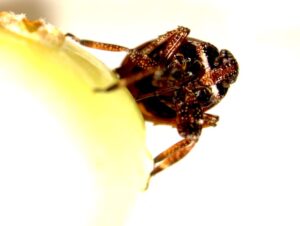The Rutgers Agrivoltaics Program and the American Farmland Trust are excited to host our inaugural agrivoltaics farmer trainings in New Jersey! This Technical Assistance Program for Agrivoltaics (TAPAS) will introduce the dual-use of land for both agricultural and solar energy production, and explore the opportunities it may present for greater farm viability in New Jersey.
There are three training events, but due to limited capacity, we are encouraging participants to only register for one training session so we may train as many producers as possible. The in-person events have a capacity of 20 participants. Register today to secure your spot as soon as possible! While these trainings are exclusively held for farmers and ranchers, we will have other opportunities in the future for non-farmer participants to learn from our team of experts.
Training Opportunities
Session 1: Full-day training intended for specialty crop farmers on Tuesday, August 13, 2024 at the Rutgers Agricultural Research and Extension Center, 121 Northville Rd, Bridgeton, NJ 08302
Session 2: Half-day training intended for livestock producers or those who focus on grazing and forage on Tuesday, August 27 at the Round House next to 65 Sheepfold Lane, New Brunswick, NJ 08901
Session 3: A virtual training for all types of producers on Tuesday, September 10 from 5-7:30 pm ET
For more information and to sign up for one of these training sessions please click here.


